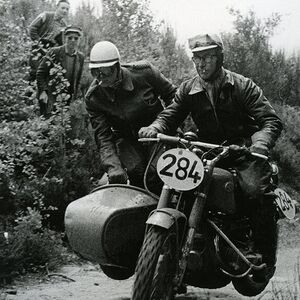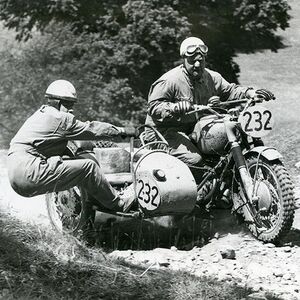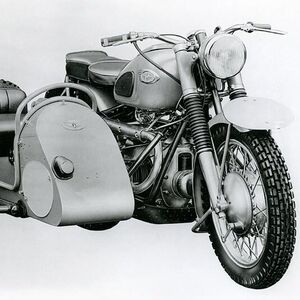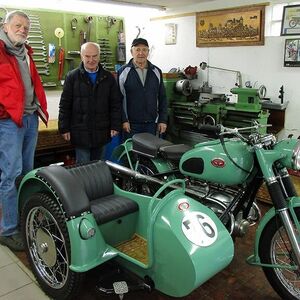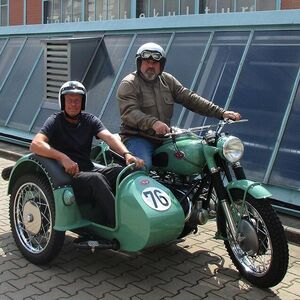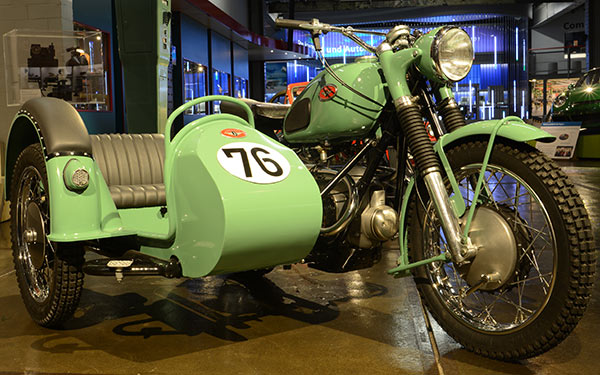
The Zündapp KS 601, Nuremberg's most legendary motorcycle of the 1950s, owes its nickname the "Green Elephant" to its unusual color and tremendous torque. After an extended and extensive restoration, as well as a partial reconstruction, a rare "Elephant" all-terrain sidecar motorcycle has now joined the permanent collection at the Museum for Industrial culture.
In the 1950s, Nuremberg was a citadel of the motorcycle industry, and Zündapp was among its most important makers. Motorcycling events were held not on the road, but only in all-terrain and endurance races.
Nuremberg motorcycle makers' involvement in motor sports during the boom years of Germany's "economic miracle" focused unequivocally on all-terrain endurance races. Unlike road races, these events involved vehicles that were close to series-produced – and that not infrequently went straight into the company’s advertising afterwards. Motorbikes of all engine capacities competed, from lightweight 50 cc solo models to the 600 cc "Elephant" sidecar combination ridden by the elite Zündapp Plant team. The entire point was to push the limits of performance and endurance for both driver and machine – top speeds were not of interest.
Zündapp never entered a motorcycle developed specifically for competition. Instead, it took regular series-production machines and modified them at the plant specifically for their task. An elevated exhaust pipe, for example, enabled the machine to drive through water. Armoring on the underside of the frame kept the oil pan from being punctured. A larger gas tank made it possible to run for longer distances, and a smaller, lightweight sidecar facilitated the requisite mobility on rough terrain. All of which meant that a series-produced Elephant that had survived, albeit after a crash, could serve as the basis for a restoration.
Today the components for this kind of all-terrain vehicle are hard to find or entirely unavailable, so some had to be reconstructed, and others were hunted down both in Germany and elsewhere – such as the high-volume "Schorsch Meier" gas tank and the tachometer, which runs in the reverse direction from the usual design. The sidecar, which used to be produced by Steib on contract for Zündapp, had to be built from scratch, because no originals survive.
These are just a few examples of the major challenges that were overcome by experienced motorcycle "restorer" Gustav Franke – with the support of a far-flung "Zündapp Network" that included experts Jochen Zarnkow and Günter Sengfelder, to mention only two.
You can now view the unit in meticulous detail on Google Arts & Culture. On a PC, just click the magnifying glass, and then the photo. A little preview window will appear at right, where you can control the zoom function.
The "Green Elephant"




